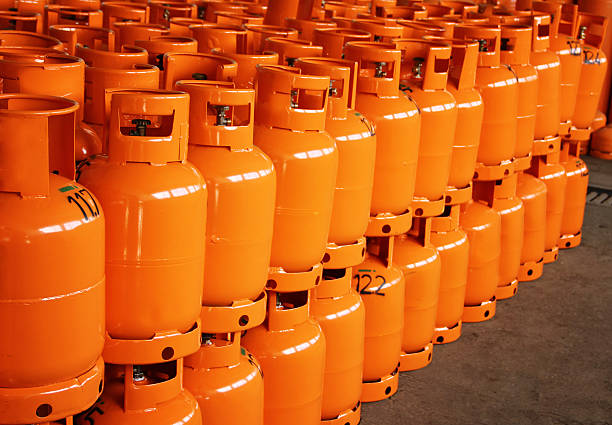
Pakistan’s Liquefied Petroleum Gas (LPG) market has seen significant fluctuations in recent years. As a crucial energy source for residential and commercial sectors, understanding the dynamics of LPG pricing is essential. This article delves into the factors affecting LPG prices in Pakistan, providing a comprehensive overview of the market trends, government policies, and economic influences.
Overview of LPG Usage in Pakistan
LPG is a vital energy source in Pakistan, catering to households, industries, and transportation. Its versatility and efficiency make it a preferred choice, especially in areas with limited natural gas supply. The adoption of LPG has been driven by its relatively lower environmental impact than other fossil fuels.
Factors Influencing LPG Prices
Global Oil Prices
One of the primary determinants of Gas LPG price in Pakistan is the fluctuation of global oil prices. Since LPG is a byproduct of crude oil and natural gas processing, any changes in the global oil market directly impact its cost. Significant events, such as geopolitical tensions or changes in oil production levels by major exporters, can lead to considerable price shifts.
Currency Exchange Rates
The exchange rate between the Pakistani Rupee (PKR) and the US Dollar (USD) is crucial in determining LPG prices. A depreciation of the PKR against the USD makes imports more expensive, thereby increasing the cost of LPG. Conversely, an appreciation of the PKR can help lower prices.
Government Policies and Taxes
Government interventions, including subsidies, taxes, and import duties, significantly influence LPG prices. Subsidies can help lower consumers’ costs, making LPG more affordable, while higher taxes and duties can lead to price increases. Policies encouraging LPG usage often include financial incentives to promote adoption, especially in rural areas.
Seasonal Demand
Seasonal variations also affect LPG prices. During winter, the demand for LPG typically rises due to increased heating requirements, leading to higher prices. Conversely, the market tends to decrease in summer, often resulting in lower prices.
Current LPG Pricing Trends in Pakistan
Residential Sector
For households, LPG prices have steadily increased over the past few years. As of mid-2024, the average of an a.8 kg cylinder ranges between PKR 2,500 and 3,000. FaGlobalil price hikes and currency depreciation have contributed to this upward trend. Despite the higher costs, LPG remains a crucial energy source for cooking and heating in many Pakistani homes, particularly in areas lacking natural gas infrastructure.
Commercial and Industrial Sector
Based on usage volumes and supplier contractual agreements, ILPG prices vary in commercial and industrial sectors. Bulk purchasing can lead to more favourable pricing. Industries that rely heavily on LPG, such as ceramics, glass, and textile manufacturing, are susceptible to price changes. Recent trends indicate that commercial LPG prices have been hovering around PKR 150 per kg, with slight variations depending on regional supply and demand dynamics.
Automotive Sector
Although more is common than CNG (Compressed Natural Gas), using LPG as an automotive fuel has beegainedaction. TheAutogasG is generally lower than petrol and diesel, making it an attractive alternative for cost-conscious consumers. The current price for automotive LPG stands at approximately PKR 120 per barrel, offering a competitive edge over traditional fuels.
Impact of International Market Dynamics
Import Dependency
Pakistan’s reliance on imported LPG makes it vulnerable to international market fluctuations. The country imports a significant portion of its LPG requirements from the Middle East, and any disruption in supply or increase in global prices can directly impact prices. Strategic partnerships and diversification of supply sources are crucial to mitigating these risks.
Regional Comparisons
Comparing LPG prices in Pakistan with those in neighbouring countries provides valuable insights. For instance, similar factors often influence LPG prices in India and Bangladesh, such as global oil prices and regional supply-demand dynamics. However, differences in government policies and subsidy structures can lead to variations in retail prices.
Future Outlook for LPG Prices in Pakistan
Renewable Energy Integration
As Pakistan explores alternative energy sources to reduce dependency on imported fuels, theintegratingnewable energy solutions could influence LPG prices. Investments in solar, wind, and hydropower projects may gradually reduce the reliance on LPG, potentially stabilizing prices in the long term.
Government Initiatives
Continued government efforts to regulate the LPG market, including monitoring supply chains and ensuring fair pricing, are essential. Initiatives aito expandPG infrastructure, especially in rural and underserved areas, will be pivotal in shaping future pricing trends.
Technological Advancements
Advancements in LPG production and distribution technologies can enhance efficiency and reduce costs. Innovations such as automated filling systems, improved storage solutions, and better logistics management will likely contribute to more stable and competitive LPG prices in the future.
Conclusion
A complex interplay of global and domestic factors influences the LPG market in Pakistan. Understanding these dynamics is crucial for stakeholders, including consumers, businesses, and policymakers. By keeping abreast of market trends, government policies, and technological advancements, Pakistan can navigate the challenges and opportunities in the LPG sector effectively. Stay Connected With a4everyone.
FAQs
Q1. What is the current LPG price in Pakistan?
The LPG price in Pakistan fluctuates regularly due to market conditions and government policies. It’s advisable to check the latest rates from local suppliers or government announcements.
Q2. How often does the LPG price change in Pakistan?
LPG prices in Pakistan can change monthly or more frequently based on international market trends, government subsidy changes, and currency exchange rate fluctuations.
Q3. Why do LPG prices vary across different regions in Pakistan?
Variations in LPG prices across regions are due to transportation costs, local demand and supply, and differences in retailer pricing strategies.
Q4. How does the government regulate LPG prices in Pakistan?
The Oil and Gas Regulatory Authority (OGRA) in Pakistan sets guidelines and maximum retail prices for LPG to ensure fair pricing and prevent consumer exploitation.
Q5. Are there any subsidies for LPG in Pakistan?
The government sometimes provides subsidies for LPG to make it more affordable for consumers, especially in rural areas, but these subsidies are subject to change based on economic policies.